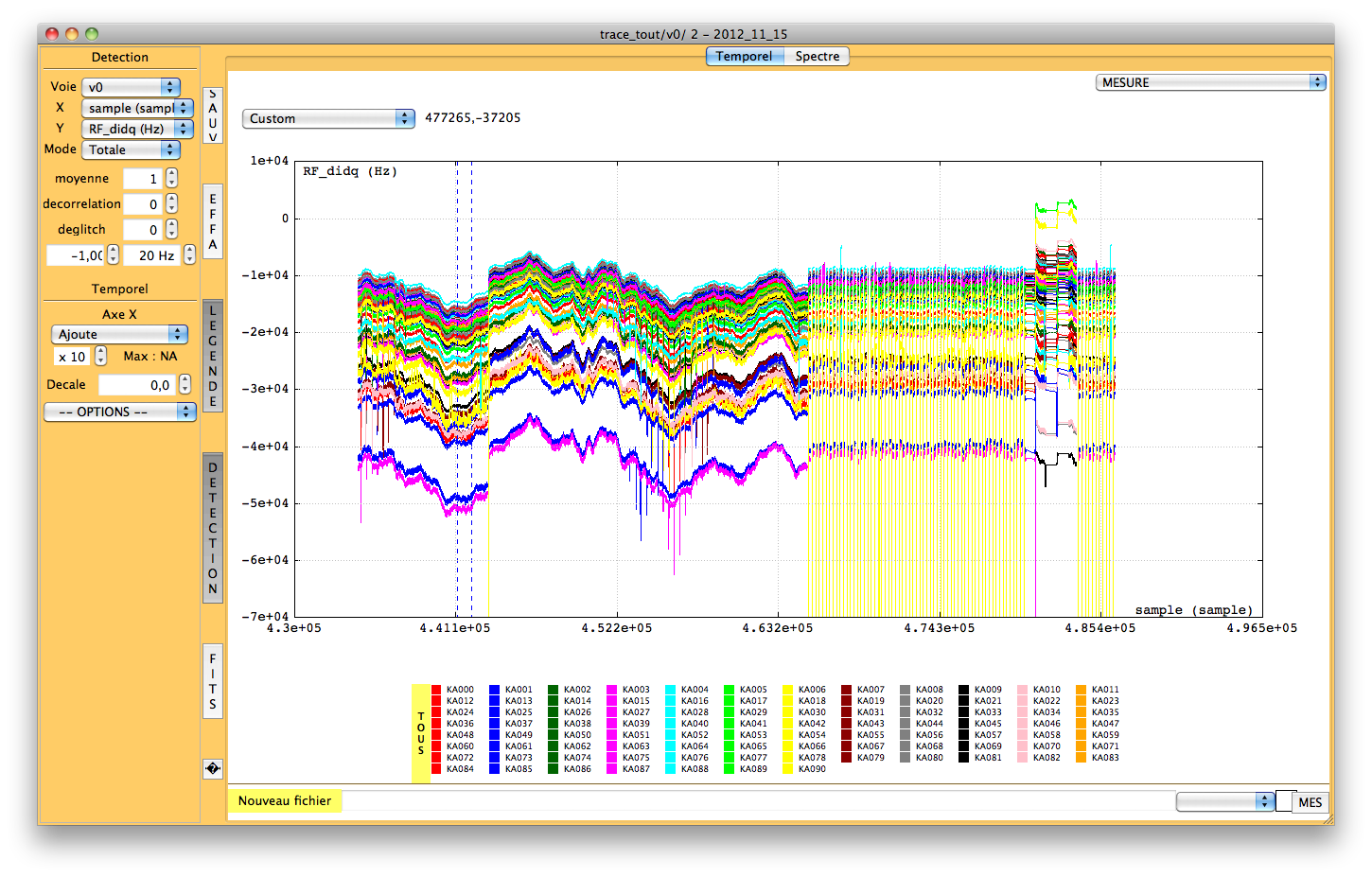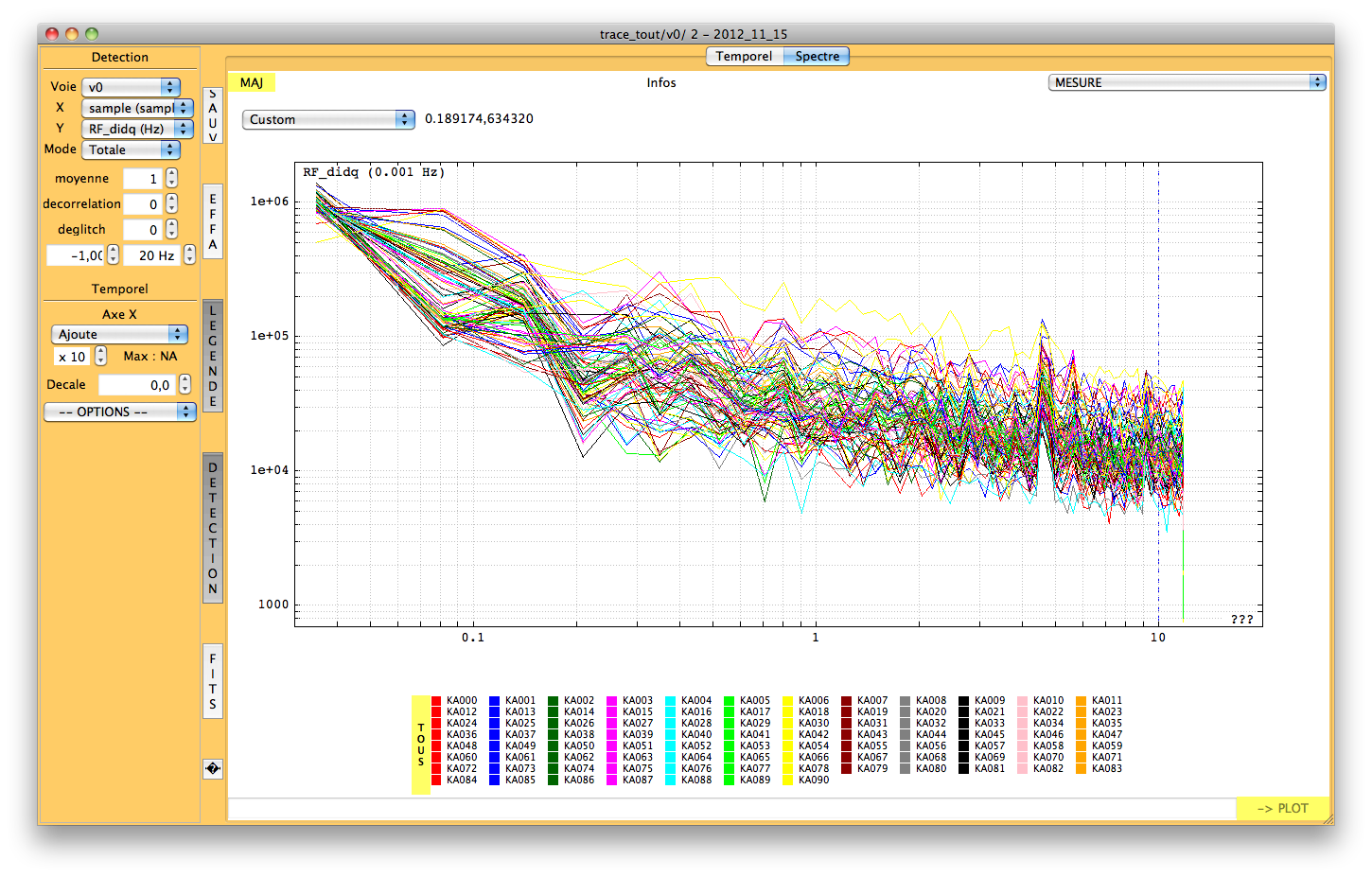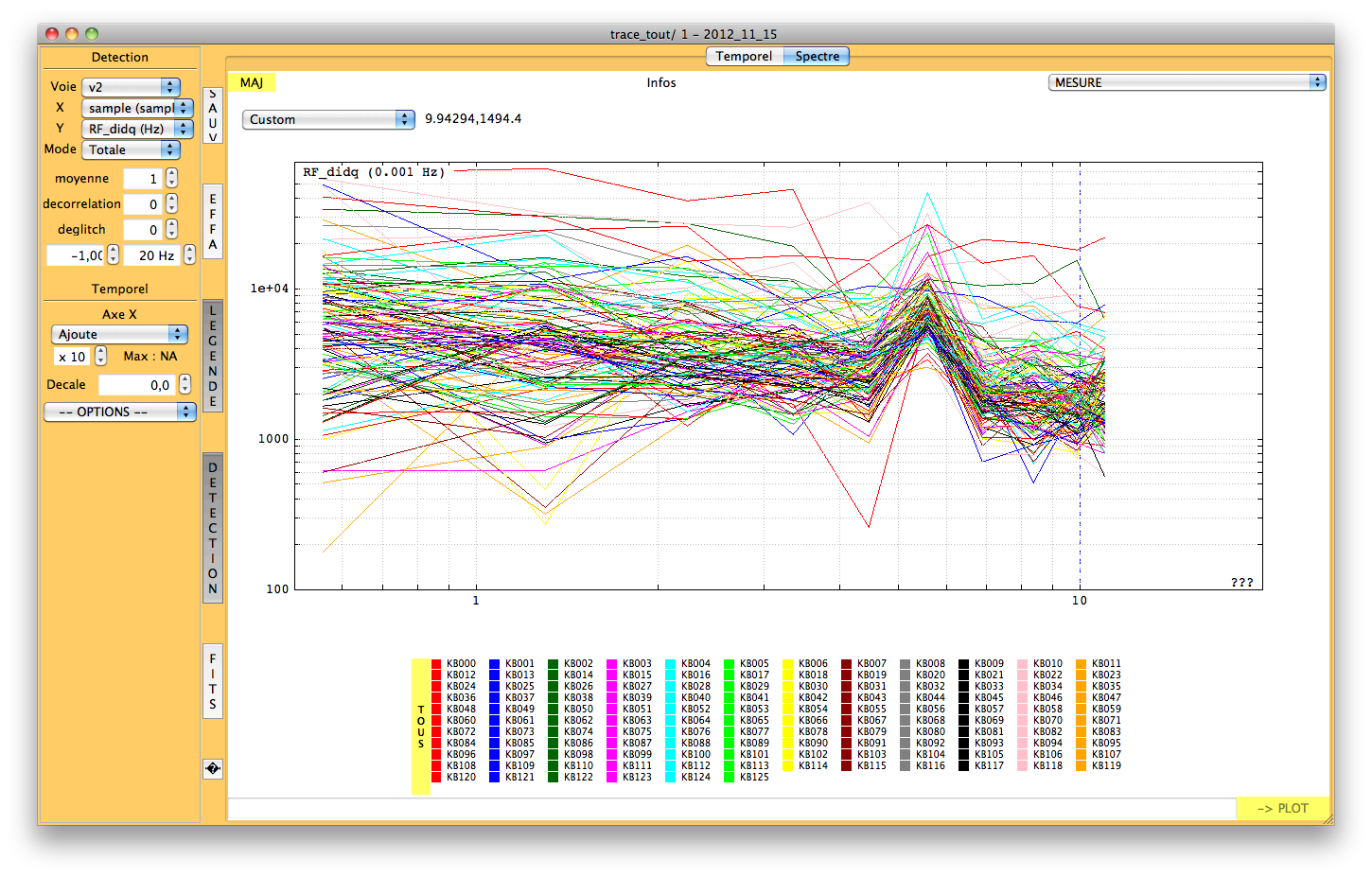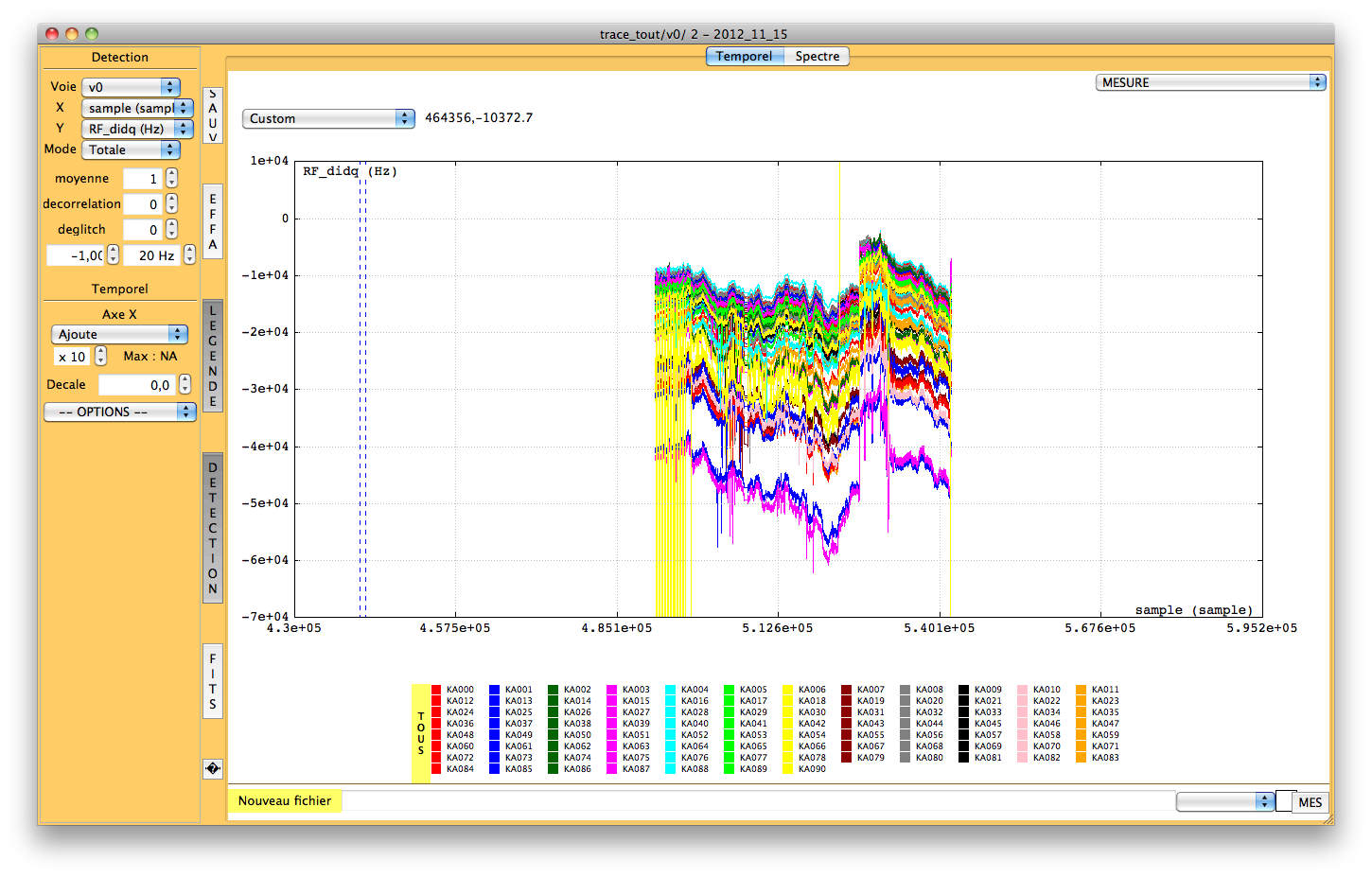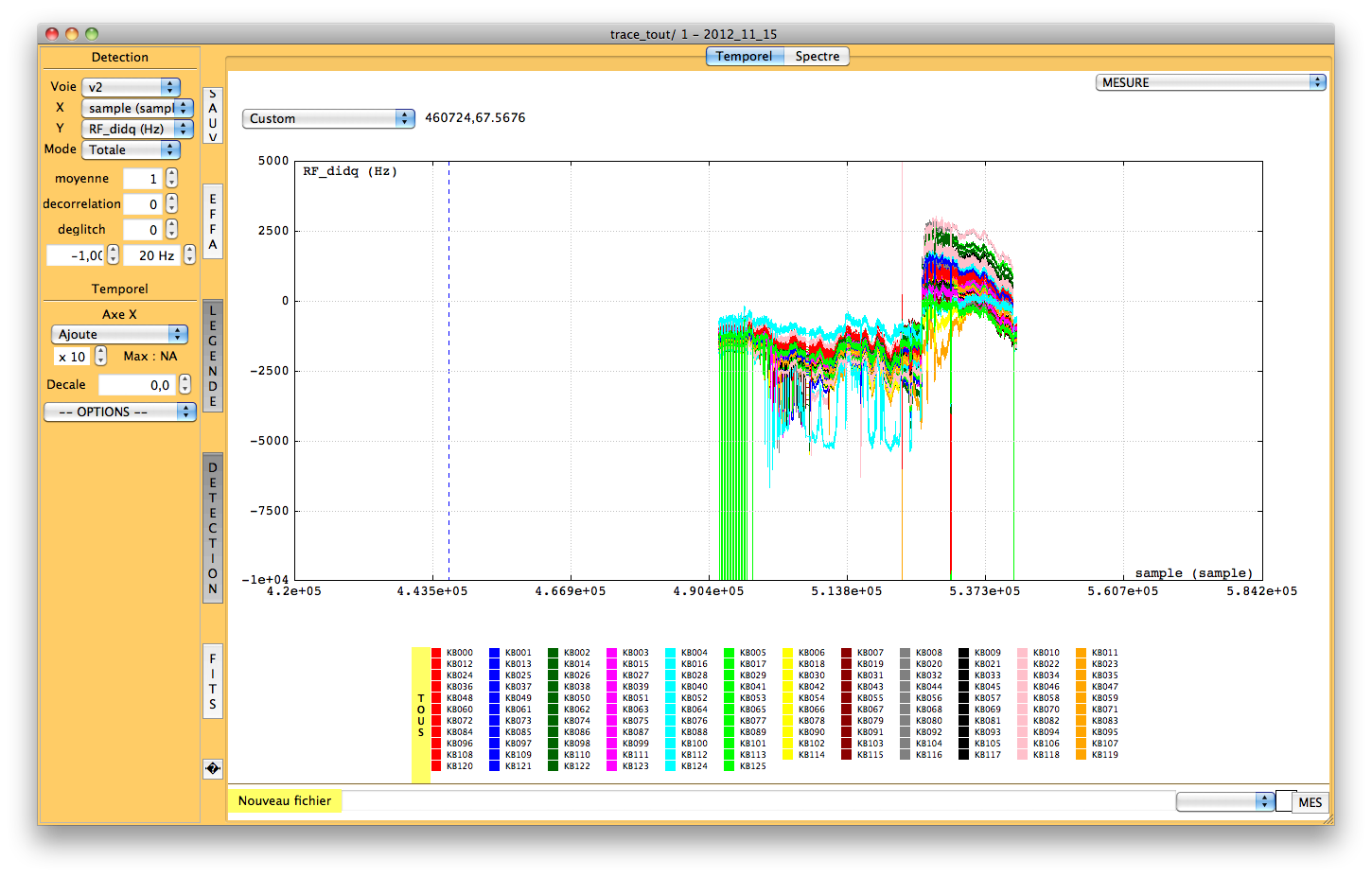|
Size: 9911
Comment:
|
Size: 9920
Comment:
|
| Deletions are marked like this. | Additions are marked like this. |
| Line 99: | Line 99: |
| Alessandro check off-line: identified 98 good (noise < 2Hz/sqrt(Hz) ) pixels out of 126 on the 2mm array (beams to be checked). | Alessandro check off-line: identified roughly 80 good (noise < 3Hz) pixels out of 126 on the 2mm array (beams to be checked). Means 2/3. |
Daily reports
Strategy for editing the page: the anti-chronological order makes it difficult to follow updates and discussions for someone not following the updates in real time when the latest entry answers an older entry possibly difficult to find. So we go back to CHRONOLOGICAL ORDER and use the table of content with hyper links to avoid long scroll downs
Contents
Thursday 8 November 2012
Alessandro and Martino driving from Grenoble to Granada with the electronic equipment (NIKEL et al.)
Friday 9 November 2012
Cryocooler started. Unfortunately the 3He pumps makes very strong vibrations in the cabin possibly affecting GISMO observations; that was not a problem as long as the weather was to bad for observations, but the forecast was good for the night, so we stopped the pump in the evening. Hopefully the pump is not mandatory for the 1st phase of the cooling process.
Saturday 10/11
The NIKA cooldown is not suffering from the pump stop. The inner parts of the cryostat are also cooling down in some way. At mid afternoon the cryostat is below 8K. However we can start the dilution only if the 3He pump is switched on. If the weather degrades again so much that the observations with GISMO are not possible any more we will switch on the pump, otherwise we have to wait until Tuesday.
Alain and Juan have been testing the NIKA software remotely, sneaking the Elvin messages from the GISMO observations.
Sunday 11/11
Snow; GISMO can't observe, so we turned on the 3He pump in the morning to proceed with the cooling process. The 3He-4He dilution started in the afternoon. ~250 mK near midnight.
Monday 12/11
Martino and Alessandro reached the telescope this morning. The cryostat is cooling down slowly but with no apparent problems. Temperature is 180mK at 1pm roughly. Expected to reach 100mK overnight. The plan in case we have to switch off the 3He pump and reduce vibrations on GISMO is to stop injecting (close eV3), stop the pump and open eV10 leaving the mixture to slowly (we hope as slowly as possible) go back in the reserve.
Tuesday 13/11
De-installation of the GISMO electronics, cryogens, installation of the NIKA electroncis, laser alignment, switch on everything. In the evening, NIKA is cold, start to look at the behaviour of the resonances. Problem: impossible to see the 1mm array ! Work till 3am to investigate the problem, make hypotheses and tests.
Wednesday 14/11
We feared the feed line was broken on the 1mm array or something else that necessitate to warm up and open the cryostat to fix the problem. We organised an emergency trip for Andrea to bring spare arrays, amplifiers, mixers, etc. In the mean time Martino found the problem: something must be broken in the IQ mixer; it delivers a 4GHz harmonics >10000 time stronger than the tones ! We could use a low pass filter so that everything higher than the band of the tones (which is 2 to 2.5 GHz) is cut, or better, we could change the mixer. In both cases it won't be necessary to open the cryostat (ouf !). Until the spares arrive we can still get the resonances of the 1mm array by reducing the power on the LO. Not great but good enough to see the resonances.
Our first hours on the sky were a bit tedious. Test various observing scripts, many little things to change in the various software, to handle, merge and format the data correctly. We gave back the telscope 2.5 hours in advance of the schedule so that Juan Penalver can do an unscheduled pointing cession with EMIR, we have enough data anyway to work and be ready for tomorrow.
Cryostat regulated at 200mK (+/- 0.02mK) for today. Heating power 105uW.
Thursday 15/11
Changed other things on the 1mm (e.g. added an old isolator at input to further kill the 2nd LO harmonics). Way better that yesterday (barely seeing Mars !), but not yet optimal (noise at meast 2-3 times worse than expected. But usable. Found 90 reasonable pixels. 126 pixels on the 2mm.
Started observations at 17h. Still not possible to do the pointing model.
Noise on 2mm array roughly 2Hz/sqrt(Hz) for most pixels (assuming decorrelation works, as is usually the case). Signal on Neptune (6.5Jy at 2mm) was around 600Hz, so S/N is roughly 300. If we trust that is 20mJy/sqrt(Hz) per pixel on 2mm. This is further confirmed on Uranus (18Jy at 2mm), for which the signal is around 2kHz. The cosmetics also does look nor bad. Out of 126 pixels, by eye, I'd say 2 thirds are good.
Concerning the 1mm array, a bit less nice. Noise is roughly 20Hz/sqrt(Hz) .. say between 10 and 20 in good weather. Signal on Uranus (50Jy) is 5000-10000 Hz. Thus S/N say between 500 if you're pessimistic and 1000 if you're optimistic. That means 50-100mJy/sqrt(Hz) per pixel. Same thing seen on Mars (in that case, due to very low elevation, we applied a correction very approximative). So I'd say (Alessandro) it's not more than 2 times worse than usual. We'll see tomorrow. We're waiting for Andrea with the new mixers. Could be that the amplifiers we added to boost I and Q on the up-converting side add some noise. Andrea arrived at 20h with the mixers.
|
|
Response on Uranus is 5-10kHz on the 1mm array (left) and 2-2.5KHz for the 2mm (right). Response is thus: 100-200 Hz/Jy at 1mm and 100-125 Hz/Jy at 2mm.
|
|
Noise as seen here is 10-20Hz/sqrt(Hz) for 1mm array and 1.5-2Hz/sqrt(Hz) for 2mm. Assuming the low-frequency part is correlated (TBC). A line at 4.6Hz is most probably coming from something in the cabin (appearing and disappearing).
|
|
Radiometric alignment performed by moving M5 in two directions. Gained roughly 2K in terms of background, for tau=0.1 sky.
Cryostat regulated at 150mK (+/- 0.02mK) for today. Heating power 50uW. SEEMS A GOOD COMPROMISE FOR BOTH ARRAYS.
Friday 16/11
The new mixers did not improve things significantly. Since the sensitivity at 1mm seemed not too bad we continue in the same configuration. Started observing at 17h LT, roughly 1 hour to test sky-dip routines. Then we go to Neptune but the sky gets very bad (at 2mm jumping by up to 100Jy). Telescope stopped for wind, started again at 20h15. Good news is that the "auto-tuning" (tuning every 10 seconds while "not in scan") procedure works very well in bad sky too. Only have problems with extreme sky-dips (going to EL<20deg) and when stopping the telescope (closing vertex). Observation stopped basically from 19h to 22h30 at least
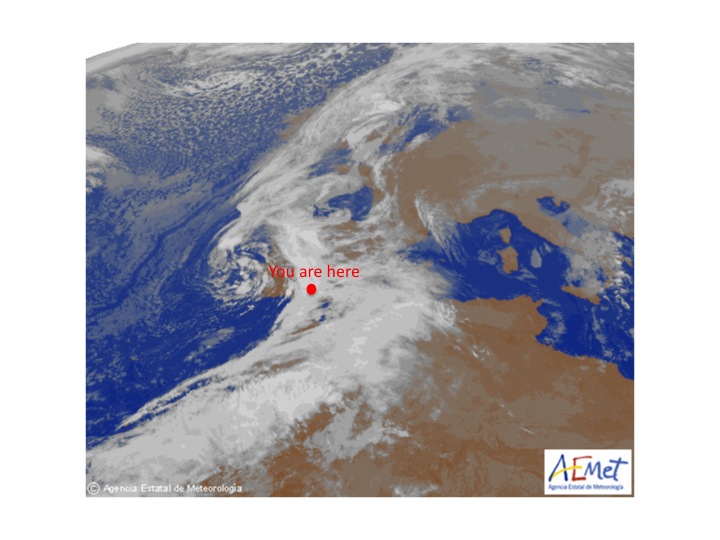
Saturday 17/11
Snow. No observations. We thus played a bit to try optimize the 1mm. We have created a "param" with only 8 pixels, but those pixels have the nominal power of -50dBm per tone (the one tested in Grenoble and that gave the best results). We confirm that the noise is as expected (around 5Hz/sqrt(Hz)). Thus, the amplifier is just saturating, but not broken. And the arrays should behave with nominal sensitivity. We'll thus have the choice between two times more noise (power -62dBm per tone) but 90 pixels or nominal noise but 8 pixels (-50dBm per tone). The 90 pixels will be used for real observations, but we want to demonstrate a nice sensitivity at 1.25mm with the 8 pixels configuration, if possible. That should be the final array sensitivity once we've solved the amplifier saturation. And demonstrate the KIDs have no intrinsic problems in reaching the sensitivity for NIKA-2.
Sunday 18/11
Snow in the morning. Clearing then.
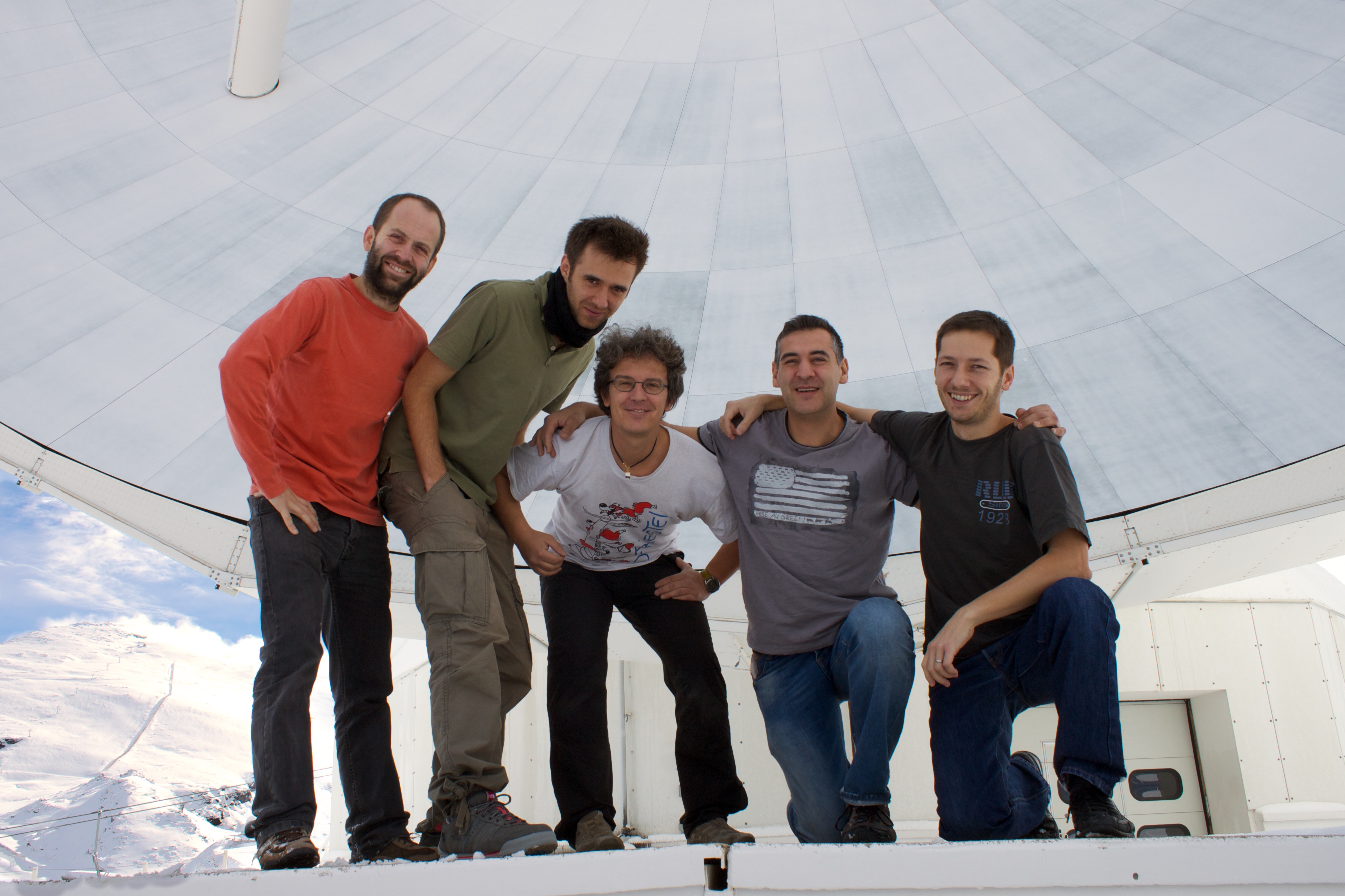
First Sun.
Update many pages of the wiki:
Alessandro check off-line: identified roughly 80 good (noise < 3Hz) pixels out of 126 on the 2mm array (beams to be checked). Means 2/3.
Plan for tonight (126 pixels 2mm, 8 pixels 1.25mm good noise):
UTC 16h source uranus; track 200 200; 2xOTF_geom; Cross; Focus; Cross (corrected). Goal: resonances and geometry on Uranus again
UTC 17h30 source pointing_quasar; track 200 200; Cross + Focus + Cross (corrected).Goal: Correct pointing before source
UTC 18h00 source IRC 10420; track 200 200 ; 2 x OTF_faint. Goal: 460mJy at 1mm
UTC 18h30 source pointing_quasar; track 200 200; Cross + Focus + Cross (corrected). Goal: Correct pointing before source
UTC 19h00 source WR147; track 200 200 ; 3 x OTF_faint. Goal: around 100mJy at 2mm
UTC 20h00 source pointing_quasar; track 200 200; Cross + Focus + Cross (corrected). Goal: Correct pointing before source
UTC 20h30 source MWC349; track 200 200 ; 2 x OTF_faint. Goal: 1.5Jy at 2mm; secondary calibrator
< UTC 21h00 pointing session until 23h
OPTIONAL: source GMaur; track 200 200 ; 6 x OTF_faint. Goal: 70mJy at 2mm
Reminder: a 100mJy source gives a signal of 10-20Hz at 1mm and 10-12.5Hz at 2mm.

